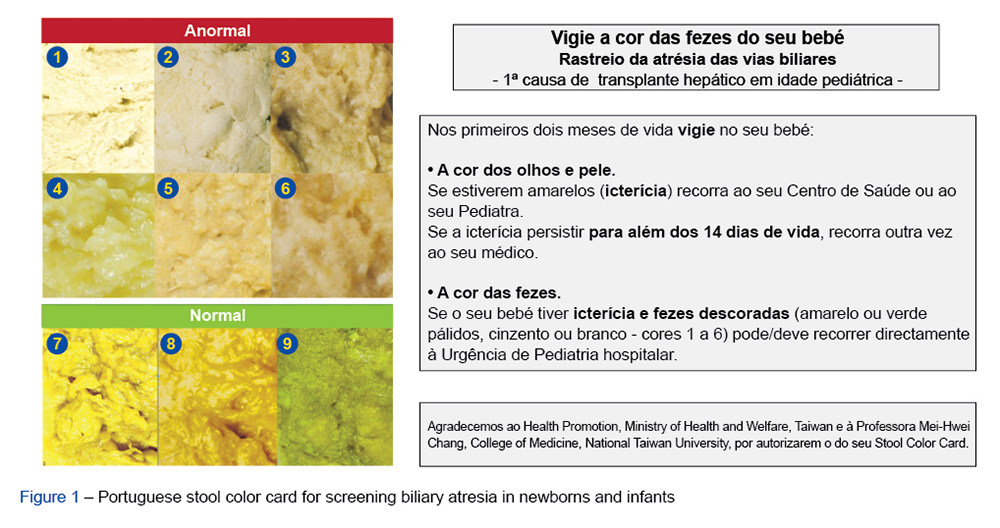REDES SOCIAIS
Revista Científica da Ordem dos Médicos

Biliary atresia (BA) is a rare entity (incidence in Europe of 1/18 000 live births) leading to great morbidity and mortality and represents the first indication for pediatric liver transplantation. The long-term prognosis depends on the timing of bile flow restoration (Kasai portoenterostomy). One of the major determining factors of prognosis and survival of the native liver is surgical intervention before 45 days of life.
Taiwan has one of the highest incidence rates of BA in the world. Therefore, a universal screening program was started there in 2002, using a validated stool color card (SCC). Subsequently, in 2011, it was observed that the median age of patients undergoing Kasai portoenterostomy decreased substantially, thus improving prognosis. Meanwhile, other countries have demonstrated the cost-effectiveness of this tool, and some have already started using it as a teaching and surveillance tool, by enrolling parents and caregivers. In Portugal, and as far as we know, there have been no initiatives at the level of the central healthcare system on this matter.is surgical intervention before 45 days of life.
Clique aqui para aceder ao texto completo (apenas em inglês).